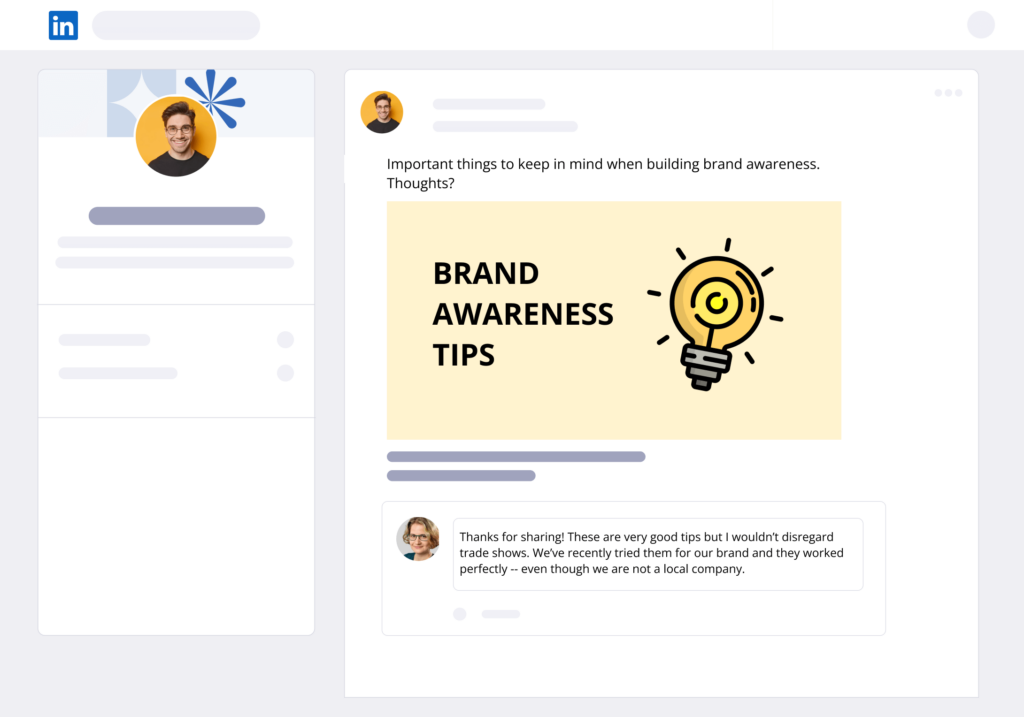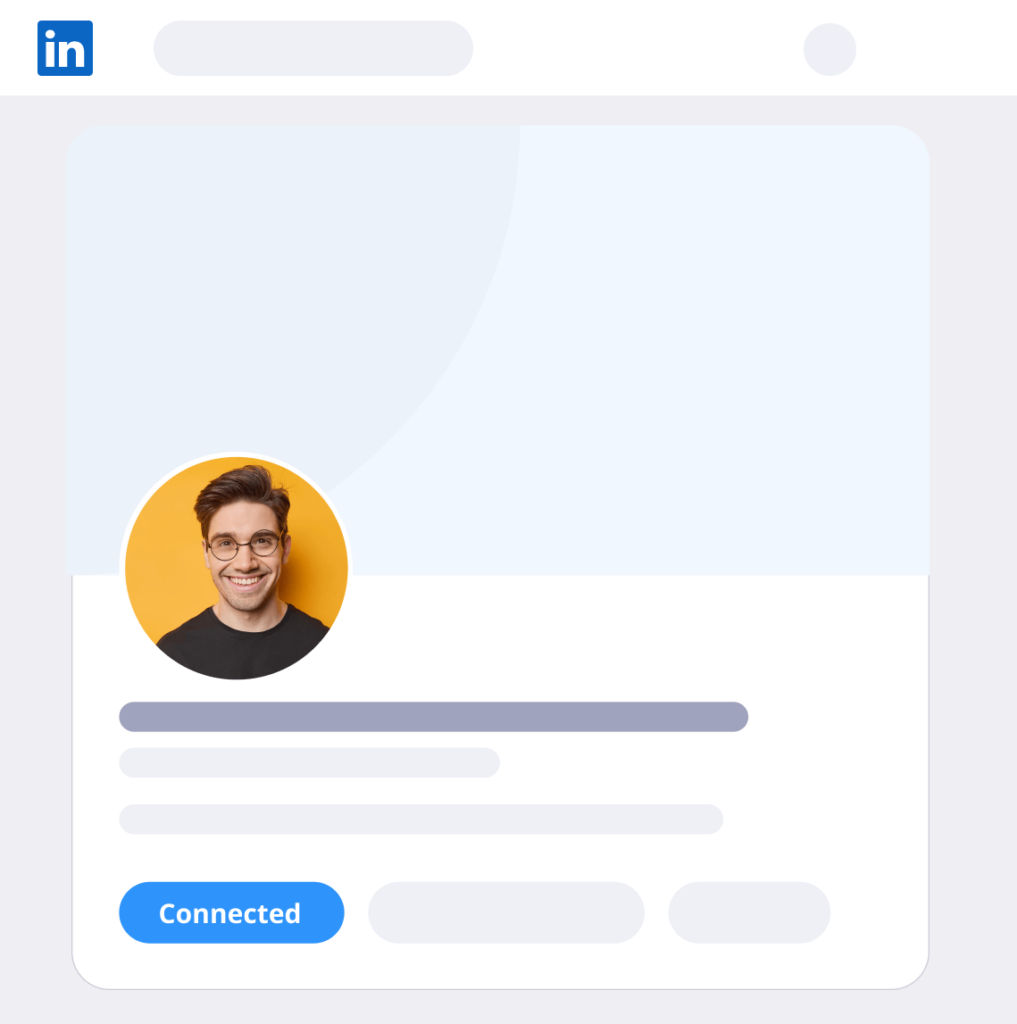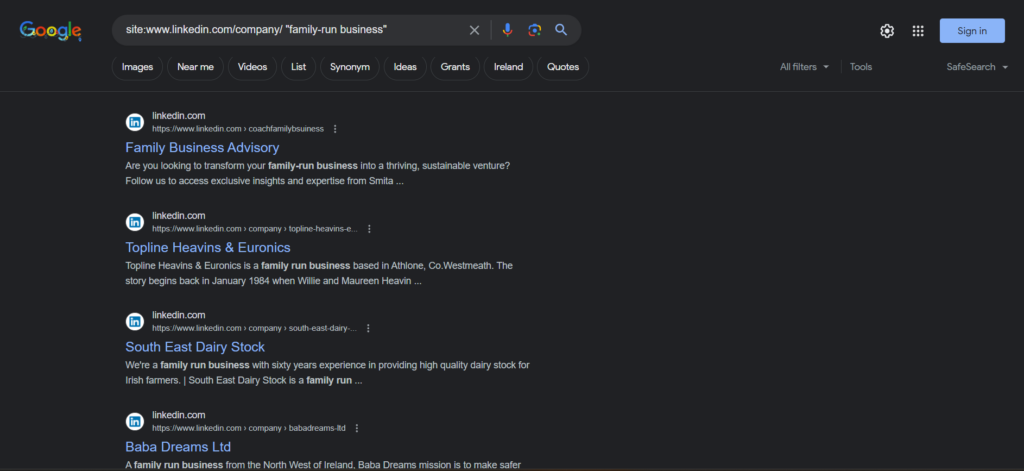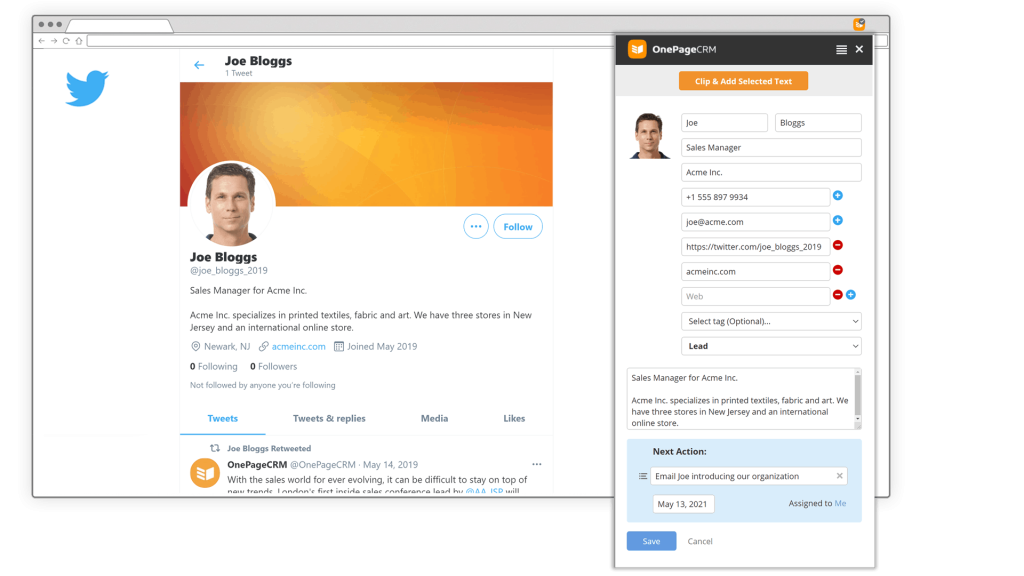
How to find clients on LinkedIn: LinkedIn prospecting in 2024

Ever had a party where everyone’s invited, but no one shows up? Well, that’s kind of what it’s like being on LinkedIn, trying to find clients with no idea where to start.
You’ve got your profile set up and your resume glowing with achievements, but where are all the prospective clients hiding? And how can you reach out to them without coming off as a desperate party host?
Here are 10 tips on how to make the most out of your LinkedIn prospecting (number 9 is a game-changer!).
1. Build your profile
When it comes to building and developing your LinkedIn profile, it’s not just about filling out every possible field and section. It’s all about the mindset.
Your LinkedIn profile is your digital business card, an NFT-like asset (although technically you don’t own your LinkedIn profile, LinkedIn does).
View it as a journey to build your personal brand and make long-term investments rather than solely optimize for relevant keywords and send out random connection requests that are never followed up.
Here are a few things to consider:
- Consider highlighting your expertise and what sets you apart from the crowd. For instance, instead of just saying “Marketing Manager,” you could say “Marketing Consultant | Generating $X revenue for small businesses.”
- Don’t hide behind AI. LinkedIn has around 1 billion active users. That’s a lot of people. But not every single one of them is there to actively create and do business but since every story and experience is unique, you’ll find your audience. Your voice matters, so let your personality shine.
- Post regularly. It’s up to you how regularly you want to post or what your posts will be about. It might take some time before you find what you’re passionate about. It’s fine. No one has everything figured out.
If you’re looking for useful content on how to improve your LinkedIn profile, here are a few LinkedIn accounts to follow:
- Filipa Canelas (40K+ followers): Helping founders get the most out of their LinkedIn
- Naim Ahmed (25K+ followers): Helping agency owners and coaches on LinkedIn
- Sam Browne (93K+ followers): LinkedIn coaching for entrepreneurs
- Ryan Musselman (50K+ followers): Content coaching for solopreneurs
- Jay Clouse (35K+ followers): Explaining the science behind content creation
But there is so much more useful content on LinkedIn. Feel free to drop a comment with your top profiles to follow!
Once you start following a few of them on LinkedIn and regularly interacting with their posts (either by liking or commenting), you’ll get more similar posts on your feed.
That’s how to make the most out of LinkedIn algorithms!
2. Connect with relevant people
Start with clearly defining who your target audience is and then how to connect with them. The most common piece of advice you usually receive is to reach out to other professionals in your area. While these connections are important for professional growth and development, they are not your clients.
“Hey, we work together in the same industry, let’s connect” is a low-effort way of building your network and predominantly focusing on the number of connections you have rather than their quality.
If you are selling primarily to small business owners, you’ll need to find a different approach to your connection requests. Here are a few examples:
- A mutual hobby: “Hi [Name], I noticed that we both share a love for hiking and traveling. I’d love to connect and keep in touch (and maybe swap a few trail recommendations?).”
- A comment/post: “Hi [Name], I just came across your comment under [Post X]. It resonated with me because [Reason X]. What are your thoughts on [Topic]?”
- A project/article: “Hi [Name], I just read about your recent project on [Topic]. I’ve been recently researching about this. Would you like to connect and discuss it further?”
- An event connection: “Hi [Name], I see we both attended [Event]. I really enjoyed [X]. Anything that stood out for you? I’d love to connect and keep in touch.”
3. Shine bright like a diamond
Rihanna coined this back in 2012. But it’s even more relevant now.
With the amount of lookalike AI-generated content out there, it’s just the perfect timing for letting your personality shine on social media. After all, there’s only one of you.
When you’re commenting on someone’s post, don’t hold back from expressing your thoughts. Do you have any unconventional ideas? Start voicing them. By standing out, you increase your chances of getting more visibility on LinkedIn and finding more prospects.

Discover your unique strengths and use them to your advantage. Are you the funny one in the room? Explore relevant meme pages and leave witty replies that resonate with others—or even better, start publishing your own posts that play around with professional quirks or long-held misbeliefs. A good sense of humor has a way of forging connections: so if you have it, don’t hide it.
You can also join LinkedIn groups and take part in their discussions. But be mindful of the groups you join. Some may be inactive or spammy. Focus on finding engaging communities that align with your goals.
For example, if your target audience are sales pros, consider joining the Salesty group. If you’re looking at building a network in content marketing, the Content Marketing Institute group is a good start.
4. Start sharing your stories
There are loads of people on LinkedIn who reuse quotes or videos from motivational speakers, authors, or great minds from the past. They are enjoyable to read and watch—and they do add lots of value.
I recently saw a post with the following quote by Will Durant: “We are what we repeatedly do. Excellence, then, is not an act, but a habit.” That’s a very good quote, isn’t it?
It’s amazing how we’ve accumulated so much knowledge as a society over thousands of years. Sharing this knowledge is important.
But you know what? You, too, have stories that are no less important to share—because they can only be told by you. Storytelling is one of the most useful skills you’ll need in business (and in life!).
Sure, there’s nothing new under the sun, but when you take into account all the little details, every story becomes special. Whether it’s about missing a flight and the lessons learned from it or your journey starting out with your business, sharing your experiences and worldviews can be enriching for everyone around you.
You don’t need to know straight away what you want to talk about. You can figure it out along the way. Start with finding the format that works best for you. If you enjoy giving speeches, record short videos and post them on LinkedIn. If you prefer writing, then start typing away.
There’s no good or bad content format—there are just different preferences.
5. Collaborate
Have you come across any fascinating opinions in long comment threads? It could be worth reaching out to the person who left the comment and asking if they’d be open to collaborating on an article together.
Professional and personal growth is often driven by collaborations. When different ideas come together and start interacting, they have the potential to create something entirely new.
Speaking of interesting people, if you stumble upon someone interesting on LinkedIn, why not consider reaching out to them and asking if they’d be up for an interview?
Interviews are a great way to gain insights from others and share those insights with the world. You can think of yourself as a researcher, scouring through all that LinkedIn has to offer to discover unique perspectives and opinions and bring them into the spotlight.
Another great idea for a collaboration is working on a non-profit project.
Non-profit organizations often seek freelancers or part-time workers. Sometimes you can be more proactive and reach out to a few organizations or companies on your own. For example, if you’re a designer, it might be worth contacting a charity organization and offering to give their website a long-needed redesign.
When you think about it, there are loads of opportunities to give back to the community. So keep your eyes open for ways to get involved!

6. Venture out into the offline world
Don’t limit yourself to just online networking and prospecting—venture out into the offline world as well.
Attend events, conferences, and seminars related to your industry or interests. This is a great opportunity to meet new people, expand your network (both offline and online), and find prospects. Later you can always connect with them on LinkedIn and follow up by inviting them for a coffee or tea.
7. Give, not take
Are you interested in working with someone long-term? Take some time to research their website and gather information. Reach out to them on LinkedIn with a thoughtful and genuine suggestion.
Don’t see any room for improvement yet? That’s also fine. If they are already doing well, let them know that they are doing great. Every one of us can do with a bit more encouragement.
Building rapport and offering value before asking for anything is crucial while trying to get clients on LinkedIn. Selling is a long-term game, and it’s not always the right time to sell immediately after connecting. Sometimes, simply putting your name out there is enough. That’s why business development and sales are so tightly connected.
Another way to get yourself noticed is to write recommendations for others even before they ask. If you genuinely have the opportunity and desire to recommend someone and help them in their career or publicly acknowledge their successes, don’t hesitate to do so.
Spread praise, encourage others, and give generously. After all, giving is much more fulfilling than receiving.
8. Use LinkedIn search to find timely posts
Let’s be honest: LinkedIn’s search could use some improvement, and there are definitely a few annoying bugs here and there. However, you can still make the most out of this platform.
One way to maximize your LinkedIn prospecting efforts is by trying out different search terms to find posts where people are looking for recommendations for tools, agencies, contractors, or anything else that is relevant to what you offer.
It takes trial and error to refine your search and find the combination of keywords that will work for you.
Also, don’t forget about Google. Many LinkedIn pages are indexed by Google. Are you targeting family-run businesses? Give this search query a try:
site:www.linkedin.com/company/ "family-run business"
9. Never leave without a next step
In a perfect world, you wouldn’t need to sell. People and businesses would notice how much value you bring and would be the ones reaching out to you. You can get to this level of online recognition but if you are not there yet, you need to be very proactive.
For a while, you’ll use LinkedIn as a primary source for prospecting. You’ll be going from different profiles, trying to find the right people to connect with so that you can then get in front of more people from your target audience. This approach requires focus and consistent action.
When you first connect with a prospect, don’t let this new contact sit in your LinkedIn messages forever—add them to your CRM account and set a reminder next to them. Otherwise, they’ll get lost in your LinkedIn messages. As your network continues to grow, so will the amount of communication.
Having clear next steps for every prospect allows you to reach out to them consistently whether to share an interesting article or ask them for a quote for your post before you finally start selling. Building relationships is a multi-step process so it’s important to appear regularly on your prospect’s radar.

10. Explore premium tools
When you feel ready, consider giving LinkedIn Premium a try. While it is an expensive tool, it can be a worthwhile investment.
Before committing to a subscription, take the time to thoroughly understand how LinkedIn works and how you can make it work for your business. Starting with a free profile allows you to explore the platform and its features, and once you are familiar with it, you can then upgrade to LinkedIn Premium or even explore the Sales Navigator.
You can also try LinkedIn ads, depending on your budget and your target audience.
Conclusion
Navigating the LinkedIn prospecting landscape may seem like playing a complex game of chess. But it’s all about making the right moves, at the right time, and in the right way.
Whether you’re a novice or a pro, these steps will help you unlock your LinkedIn potential for growing your business, making it work for you around the clock.
So, ready to dive into the LinkedIn ocean?





![22 tips on how to get consulting clients in 2024 [Ultimate Guide]](https://www.onepagecrm.com/wp-content/uploads/new-clients-blog.png)



